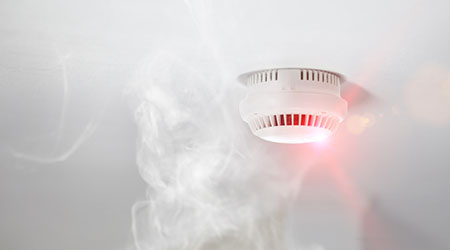Fire alarm systems play an important role in the ability of institutional and commercial facilities to provide early warning to and safely evacuate occupants during a fire emergency. The fire alarm system must operate and function properly, but it is difficult to tell if a system is fully operational just by looking at it, according to an article from Facility Maintenance decisions on the FacilityNet website.
Fire alarm systems are mostly made of electronics that degrade over time and can compromise system readiness, so proper maintenance, inspection and testing can ensure a system works as designed.
These steps also are required by local fire code, such as the International Fire Code 2018, 907.8: “The maintenance and testing schedules and procedures for fire alarm and fire detection systems shall be in accordance with NFPA 72.” NFPA 72 National Fire Alarm and Signaling Code covers the application, installation, location, performance, inspection, testing and maintenance of fire alarm systems.
Maintenance and engineering managers need to ensure their front-line technicians follow the code when maintaining fire alarm systems. Proper testing, inspection and maintenance also ensure systems remain in the best possible working condition and reduce costs by preventing repairs and false alarms.
Inspection, testing and maintenance requirements for fire alarm systems can be found in Chapter 14 of the NFPA 72. The code establishes minimum required levels of performance, but it does not establish the only methods by which departments can meet these requirements. In other words, the code allows for requirements from other sources that exceed those in Chapter 14.
Read the full article on FacilitiesNet.

 Building Sustainable Healthcare for an Aging Population
Building Sustainable Healthcare for an Aging Population Froedtert ThedaCare Announces Opening of ThedaCare Medical Center-Oshkosh
Froedtert ThedaCare Announces Opening of ThedaCare Medical Center-Oshkosh Touchmark Acquires The Hacienda at Georgetown Senior Living Facility
Touchmark Acquires The Hacienda at Georgetown Senior Living Facility Contaminants Under Foot: A Closer Look at Patient Room Floors
Contaminants Under Foot: A Closer Look at Patient Room Floors Power Outages Largely Driven by Extreme Weather Events
Power Outages Largely Driven by Extreme Weather Events